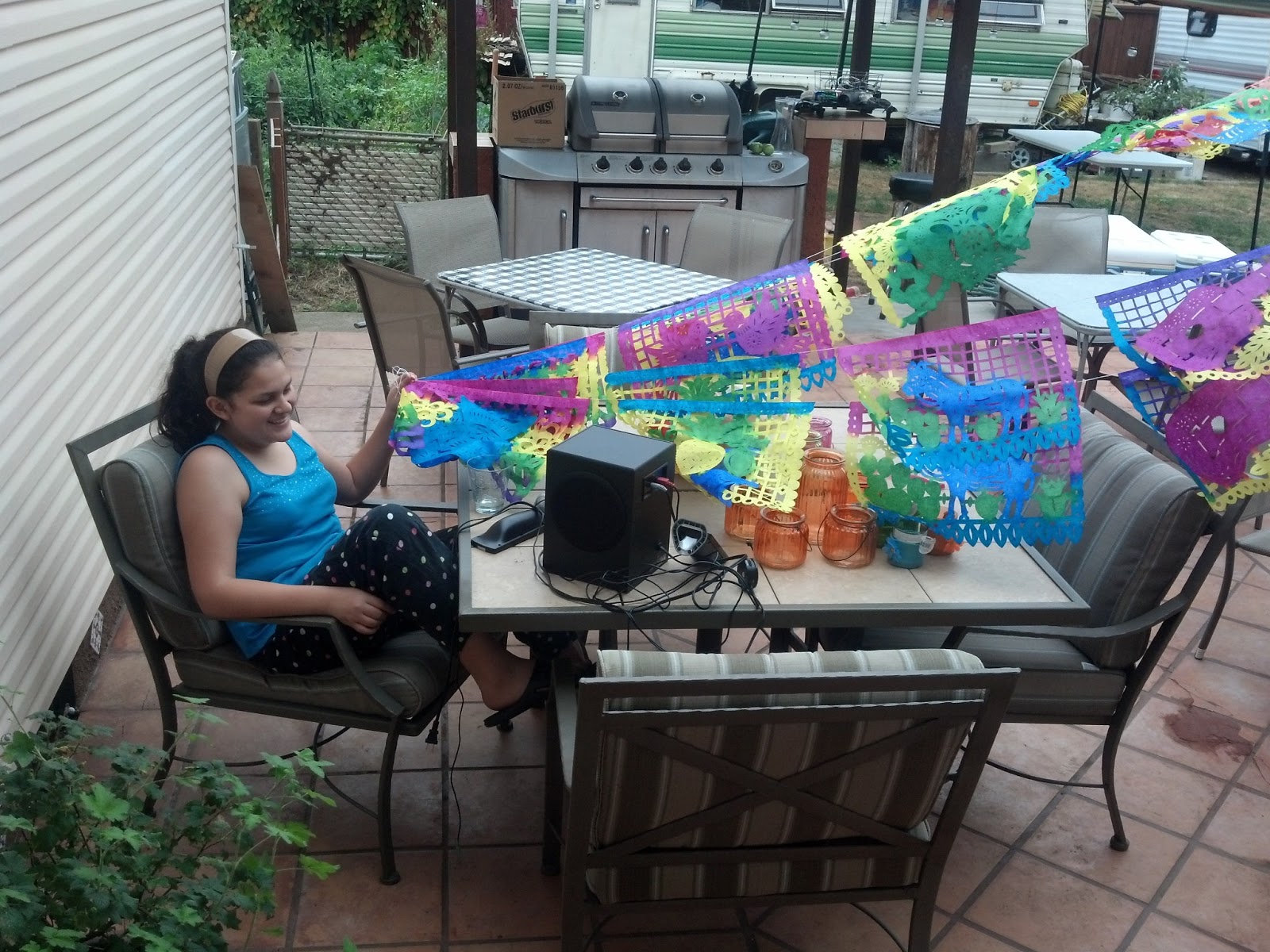Honoring new mommies and their babies is a very special job!
We were excited and blessed to host a Baby Shower Fiesta for my sister-in-law and second time mama, Jen!
Shower invitations were made to resemble Mexican papel picado decorations.
We hung strings of colorful papel picado that I purchased during my last trip to Mexico City!
Their bright, cheerful colors and designs were perfect for our Fiesta Baby Shower theme!
We also made a "Fiesta" banner using the Cricut (and the Ole cartridge!) to continue the papel picado theme!
We used jute twine to hang up this banner, and put balloons on each end!
We filled the patio with small tables, and decorated each one with a unique cloth tablecloth, secured in place with a tile trivet & colorful glass tealight buckets! Flowers were made by a talented local florist!
We decorated the lily & clematis arbor with hanging glass buckets and more papel picado!
We played the "baby" name game!
The player that collects the most bracelets from other players who say the word "baby" wins!
Food and drink...
We served a delicious array of dishes for the taco salad & tostada bar. Yum!
Fruit salad...
Beans & Rice...
Chicken Tinga & Beef Tampiquena...
Chicken Fajitas & Beef Picadillo...
The mock sangria punch was a hit!
And the cake! Isn't it just precious? Two layers of pure delight, decorated with colorful papel piacdo and flowers! Pink champagne w/strawberry 'bavarian' cream filling on the bottom layer and strawberry cake w/cream filling on the top layer!
A beautiful work of art!
Congratulations to the beautiful mama-to-be!
All our love,
Megan, Ky & Anna




.jpg)








































